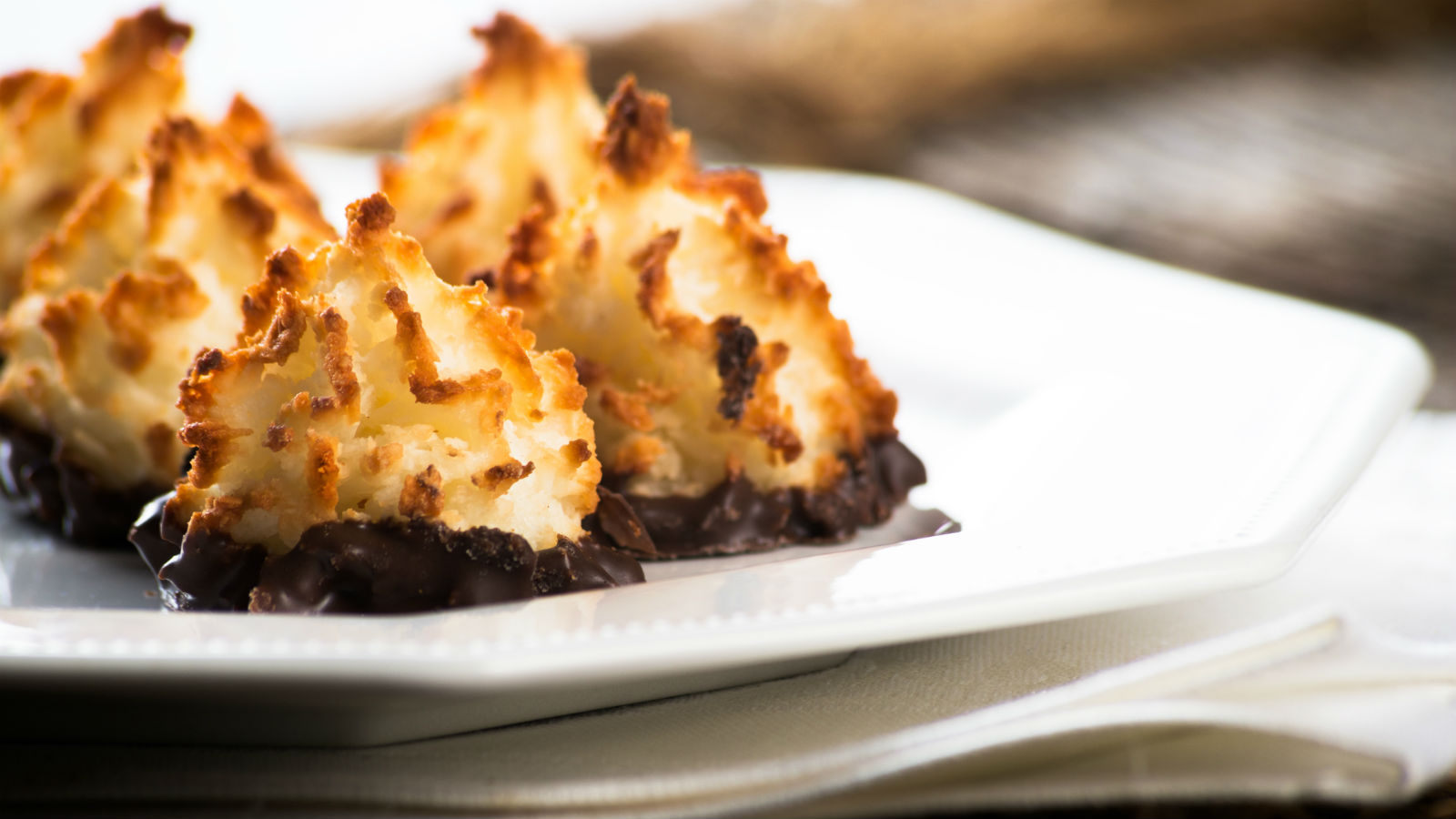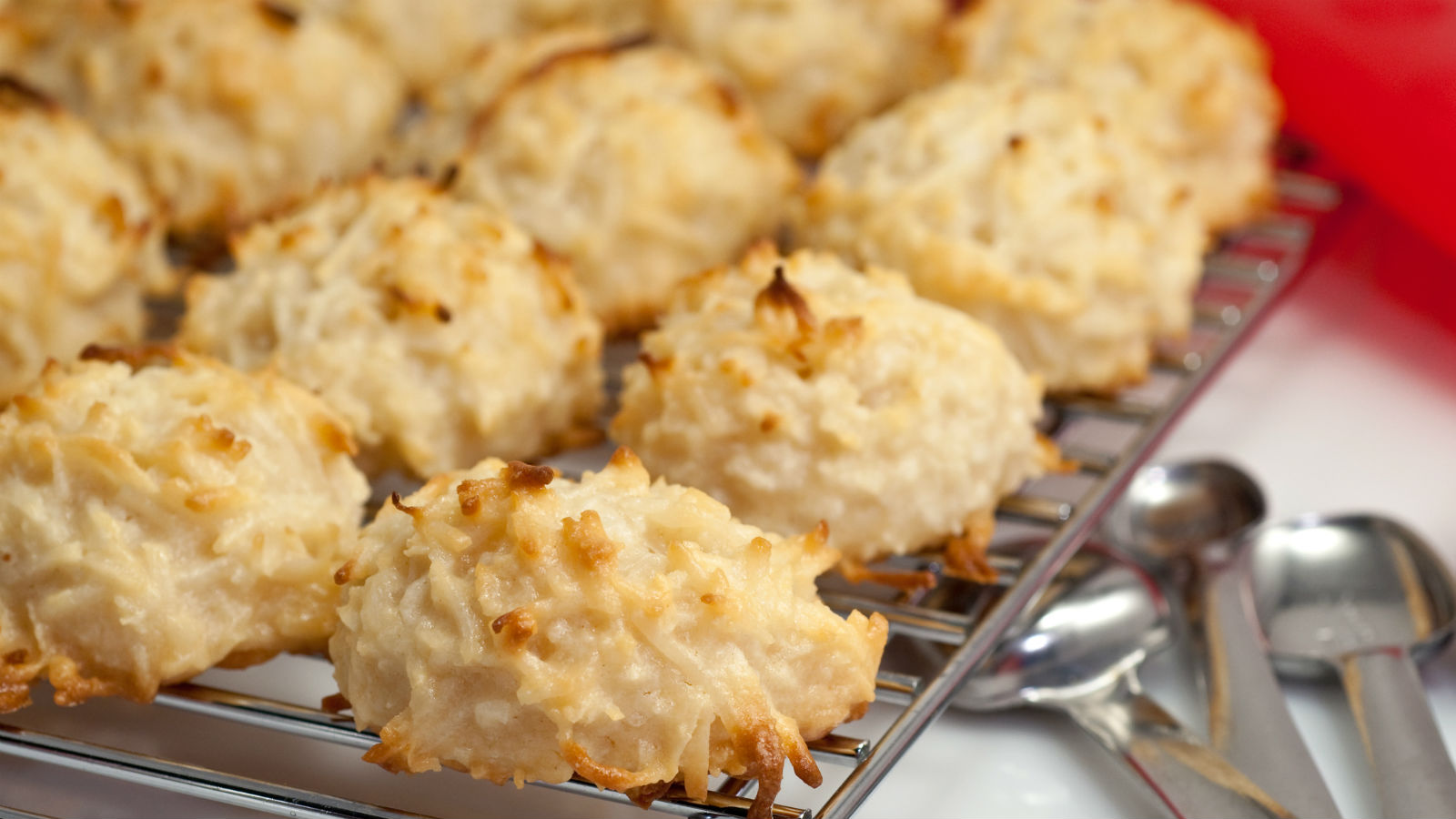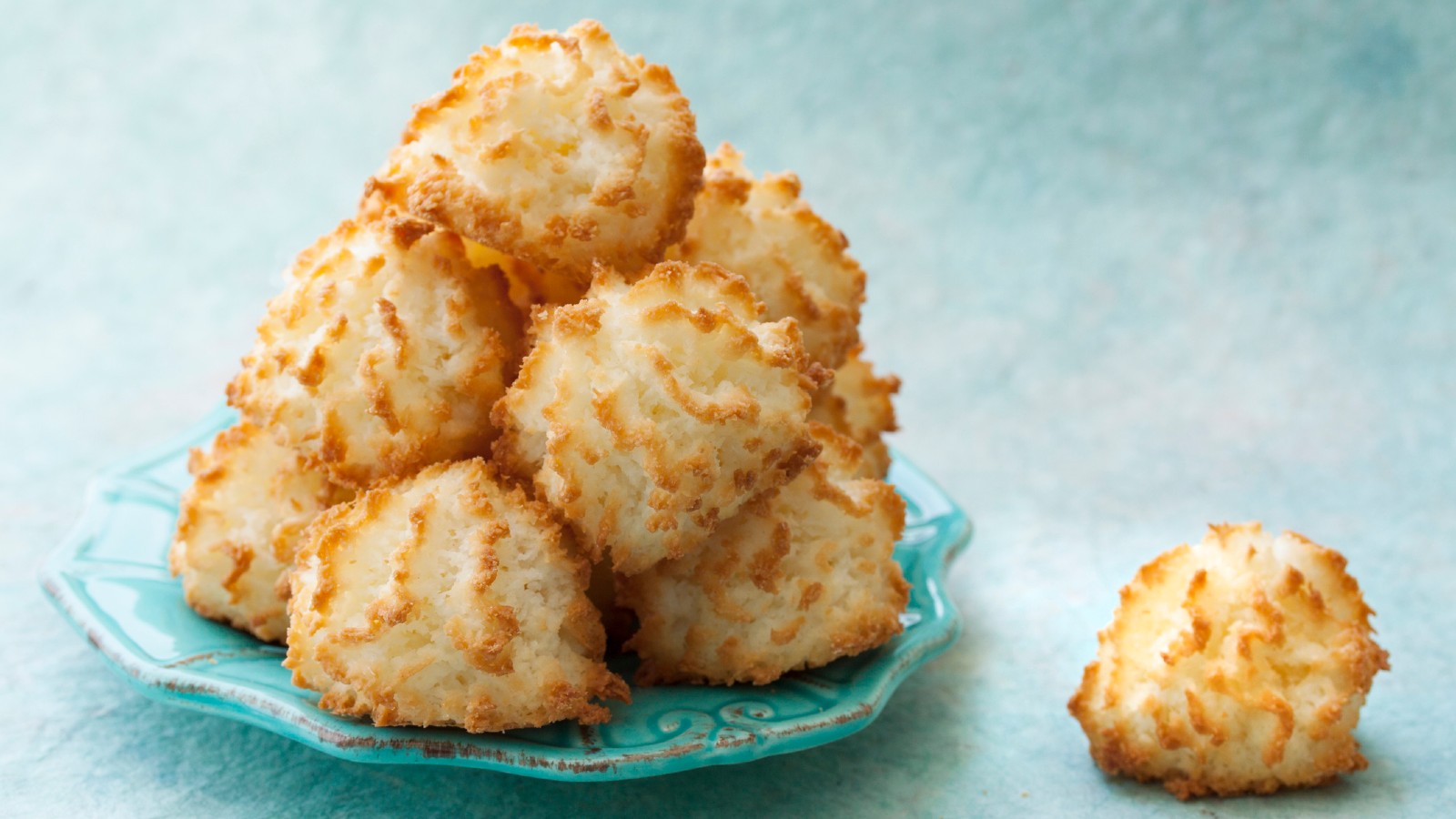As you prepare to take leave of leaven for Passover, take comfort in the fact that you can still satisfy your craving for sweet baked goods by whipping up a batch of macaroons. (And I do mean literally “whip,” as the best macaroons require beating those egg whites — but more on that later.)
Although most Jews are very familiar with this traditional Pesach goodie, a chewy half-dome of flake coconut bound together with egg whites (and will tell you without skipping a beat how they are most certainly not the same as that other trendy French cookie, the macaron), many are less cognizant of its precise origins. What may come as a surprise to some is that the macaroon was most likely initially a Christian Italian, rather than Jewish, creation, as evinced by its etymological lineage. “Macaroon” stems from the Italian maccherone, meaning “paste” (referring to the almonds that were the base ingredient), which in turn is derived from the verb ammaccare, “to crush.”

While the Larousse Gastronomique gives credit to a convent in Commercy, France as the inventor of the macaroon around the year 791, the majority of scholars favor the Italian historical narrative, which asserts that macaroons first appeared on the dining tables of Italian monasteries around the 8th or 9th centuries. The original recipe utilized almond paste and egg whites (but no coconut). Later, Catherine de Medici, Italian bride to King Henry II, facilitated the introduction of the macaroon to greater Europe via travel with her coterie of Italian pastry chefs back and forth between England and other surrounding nations.
In the centuries that followed, variations in the original standard recipe quickly appeared in different parts of the globe in the course of increased cross-cultural culinary exchange. Almond trade between Arabs and Venetians, for instance, gave rise to versions that utilized sugar as well as almonds in Syria during the 1400s. Macaroons then made their official mass-market debut in sixteenth-century Nancy, France where, according to legend, two Benedictine nuns seeking asylum during the French Revolution began producing and selling the cookies, earning them the moniker the Macaroon Sisters.
The Nosher celebrates the traditions and recipes that have brought Jews together for centuries. Donate today to keep The Nosher's stories and recipes accessible to all.
Italian Jews staked an enduring claim on this storied confection, however, when they embraced the macaroon as the official-unofficial dessert of Passover due to it requiring neither leavening nor flour. Its mild sweetness and toothsome texture, in addition to its kosher-for-Passover attributes, made it appealing to Jews and non-Jews alike all over the continent and beyond, and major cookery manuals such as Robert Smith’s Court Cookery (1725) and Mrs. Beeton’s Book of Household Management (1861) featured recipes.

Home cooks began incorporating potato starch into macaroons for added heft. Another major alteration in macaroon preparation occurred as a result of the influx of tropical imports from Ceylon and Sri Lanka to France, for it was discovered that coconuts were far more resilient to rot than almonds. For similar reasons, shredded dried coconut soon replaced crushed almonds in macaroons produced in the New World, and by the turn of the twentieth century, Jewish immigrants keeping kosher for Passover in their adopted home followed suit with this swap.
Although you will be hard-pressed to find a Jew who doesn’t have a soft spot for shop-bought old-school macaroons, these days making your own can be even more satisfying. Macaroon recipes spanning traditional (chocolate dipped!) as well as unorthodox (lemon, cornflake) flavors abound online, but crafting the perfect ’caroon in terms of taste and structural integrity can be tricky. Here are our 5 tips for perfect macaroons, every time.
1. Use high-quality, fresh shredded coconut
If your shredded coconut is falling out in bulky clumps rather than flowing out of the bag like snow, it’s time to pony up for a fresh sack.
2. The same goes for flavorings/pastes
None of that imitation, generic stuff, please, that has been sitting in the back of the pantry since George Bush, Sr. was in office. Invest in real extracts (we recommend Nielsen-Massey).
3. Whip your egg whites to retain body
There’s nothing sadder than a macaroon that enters the oven a hip hillock and emerges a pitiful little pancake. Beating your egg whites until stiff peaks form will help prevent this problem. And, with that being said…
4. Line those baking sheets with parchment paper
…only slightly less sad is managing to make perfectly mounded macaroons and then have them stick to the sheet.
5. Store your macaroons in an air-tight container
So doing will keep them moist. You can prolong their life even more by keeping them in the fridge.



